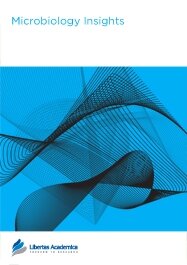

Publication Date: 14 Apr 2010
Type: Original Research
Journal: Microbiology Insights
Citation: Microbiology Insights 2010:3 27-36
doi: 10.4137/MBI.S4043

The infectious agent of transmissible spongiform encephalopathy (TSE) was assumed to be the aggregate of abnormal prion protein isoform (PrPsc). We observed that lowering the pH of 3% SDS-inoculated plasma or brain homogenate after PK digestion to 4.5 (acidic SDS condition) enabled to precipitate proteinase K-resistant prion protein (PrPres) in plasma as well as PrPres in the brain with synthetic poly-A RNA as affinity aggregate. Therefore, we determined if RNA molecules could be used for discriminating TSE patients from healthy individuals. We also examined the plasma of patients with classical Creutzfeldt–Jakob disease (CJD) and other brain disorders who were not diagnosed with TSE. The results indicated that RNA approximately 1.5–2.0 kb in length was commonly observed in the plasma of patients with brain disorders but was not detected in the plasma of healthy volunteers. Enhanced expression of RNA and its protection from endogenous nucleases might occur in the former group of patients. Moreover, we speculate that the non-transmissible neuronal disorders overlap with prion diseases.
PDF (804.04 KB PDF FORMAT)
RIS citation (ENDNOTE, REFERENCE MANAGER, PROCITE, REFWORKS)
BibTex citation (BIBDESK, LATEX)

Contributing an invited review was a pleasant experience with Libertas. We are grateful for such a solid platform and their belief in young talented scientists and their research. Overall, it was a wonderful and simplified process from submission to publication of the article with regular updates at each step from various staff members. Each person was extremely efficient and very professional during manuscript processing.
Facebook Google+ Twitter
Pinterest Tumblr YouTube